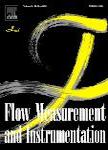版权所有:内蒙古大学图书馆 技术提供:维普资讯• 智图
内蒙古自治区呼和浩特市赛罕区大学西街235号 邮编: 010021

作者机构:Tianjin Univ Sch Elect & Informat Engn Tianjin 300072 Peoples R China
出 版 物:《FLOW MEASUREMENT AND INSTRUMENTATION》 (Flow. Meas. Instrum.)
年 卷 期:2025年第102卷
核心收录:
学科分类:080702[工学-热能工程] 08[工学] 0807[工学-动力工程及工程热物理] 0804[工学-仪器科学与技术] 0802[工学-机械工程]
基 金:National Natural Science Founda-tion of China
主 题:Oil-gas-water three-phase flow Intermittent flow Conductance sensor Water holdup Local flow structure
摘 要:The water holdup measurement in the horizontal intermittent oil-gas-water flow slug region is of great significance for understanding interfacial heat and mass transfer and revealing the mechanism of flow pattern transition. Considering the multi-scale structural characteristics of the horizontal oil-gas-water intermittent flow, two plug-in conductance sensors are designed for the water holdup measurement in the slug region. They are distributed multi-electrode conductance sensor (DMECS) and ring-electrode conductance sensor (RECS). The finite element method is employed to optimize the geometries of the sensors to enhance the sensitivity and uniformity of the detection field. Experiments are conducted in horizontal gas-water and oil-gas-water flows within a 20 mm diameter pipe. Response signals from both conductance sensors are collected. Recurrence plots are drawn based on the collected signals to demonstrate the capability to detect local flow structures. The nonuniform distribution characteristics of water holdup in the intermittent flow slug region are studied. Besides, the influence of the oil phase on the local flow structures and water holdup is further explored. Finally, the water holdup measured by the conductance sensors is compared with the wire-mesh sensor. The results indicate that the RECS can reflect the average water holdup, whilst the DMECS is sensitive to the local water holdup characteristics. Thus, the DMECS has a higher measurement resolution for small-scale oil droplets and bubbles. By comparison, the RECS demonstrates better measurement performance for the pseudo slug flow with large-scale flow structures.